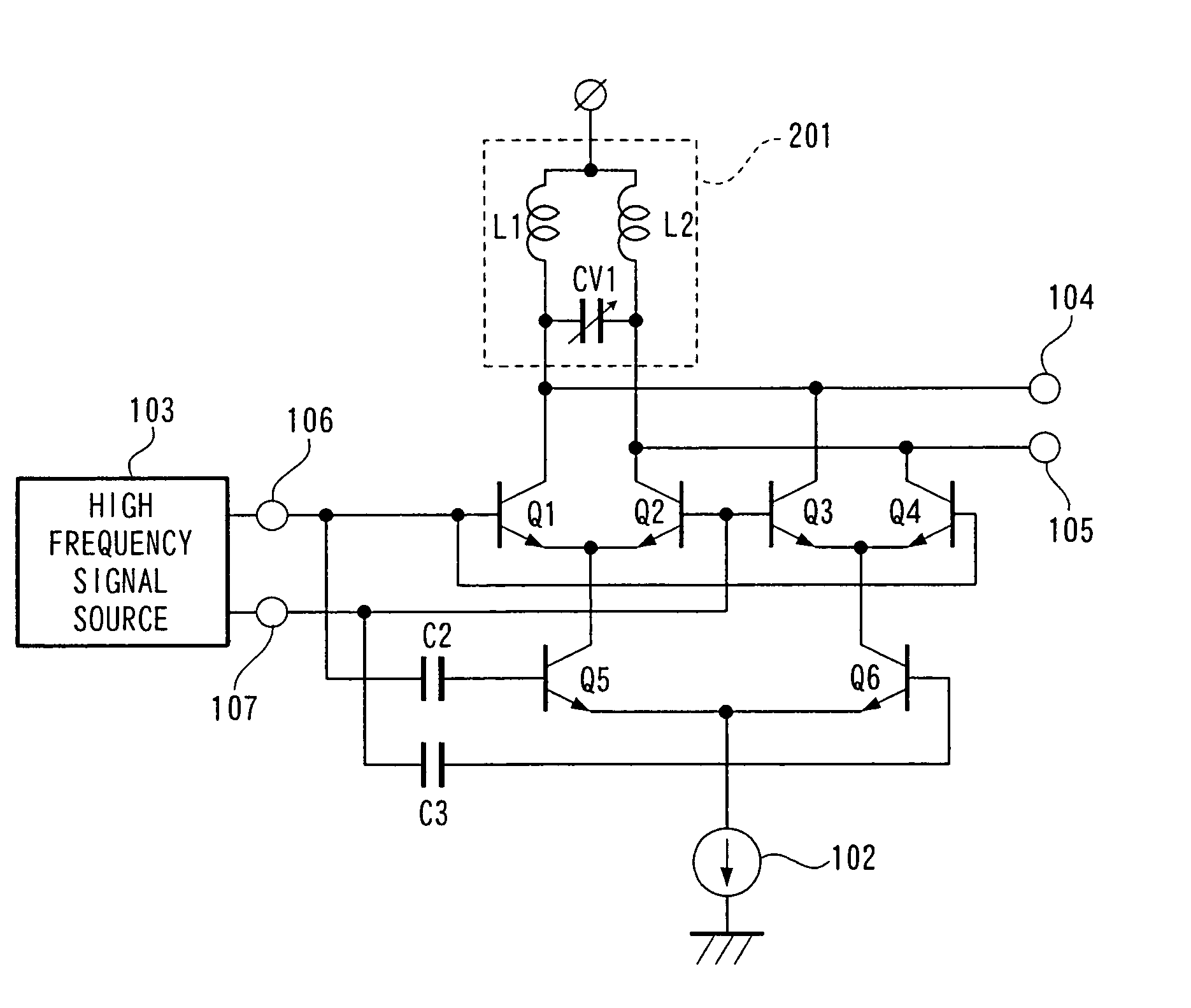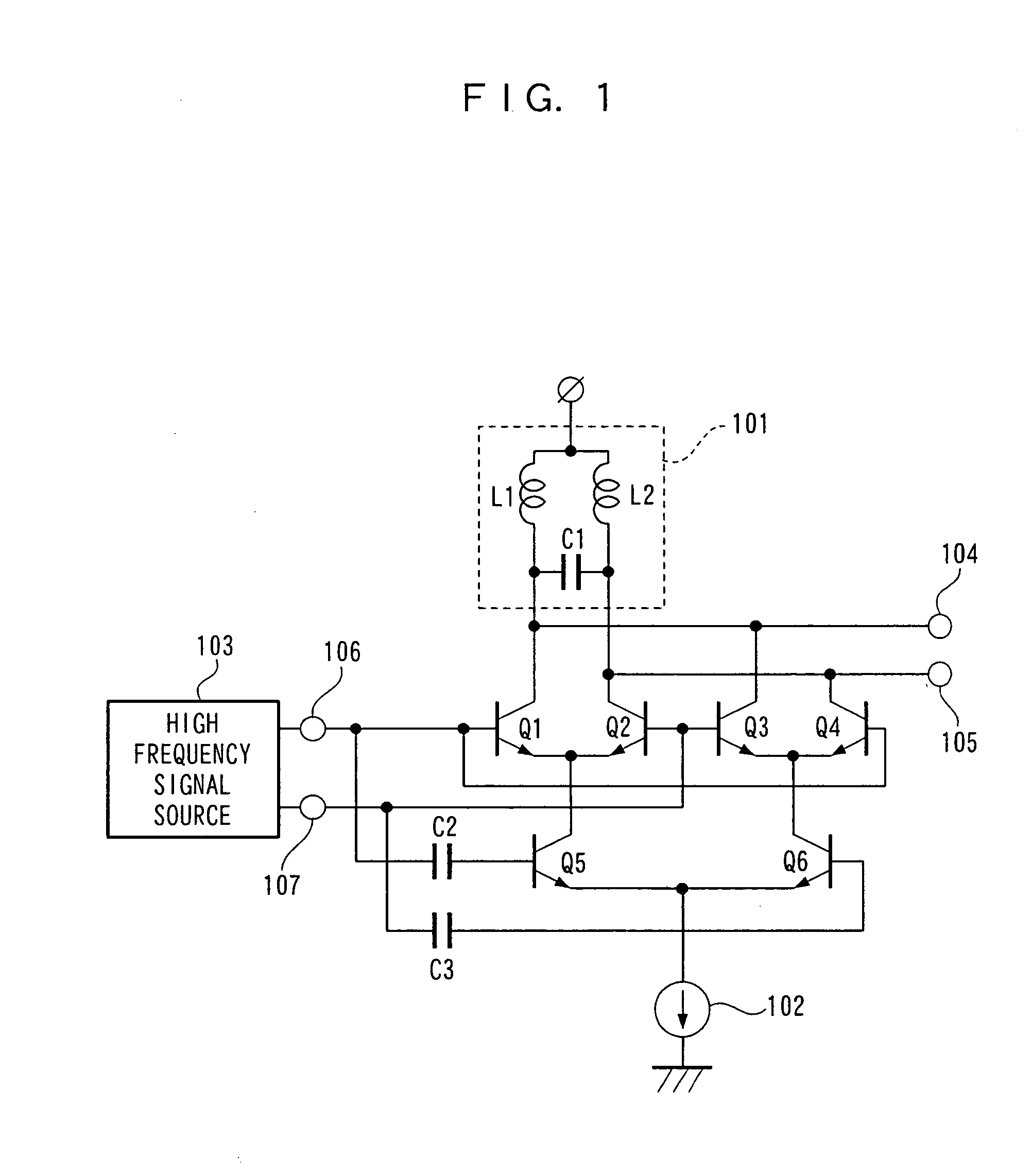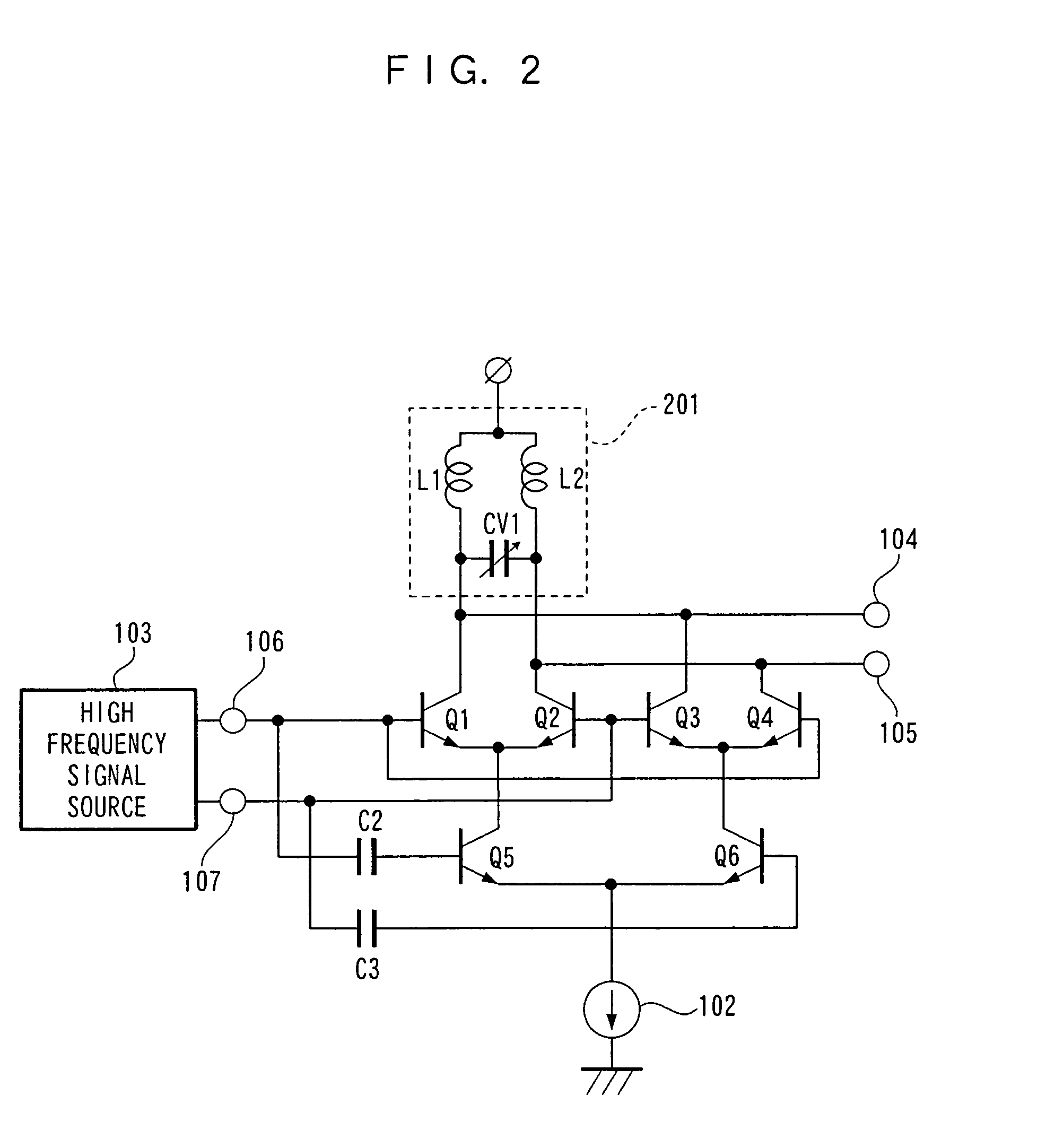Radio frequency doubler
a radio frequency doubler and frequency technology, applied in the field of high frequency doublers, can solve the problems of increasing the size of the circuit, increasing the current consumption, and not being applicable to an integrated circuit using a differential circuit, so as to achieve the effect of efficiently outputing only a double frequency and facilitating integration
- Summary
- Abstract
- Description
- Claims
- Application Information
AI Technical Summary
Benefits of technology
Problems solved by technology
Method used
Image
Examples
embodiment 1
[0019]The following will describe the circuit configuration of Embodiment 1 of the present invention in accordance with the accompanying drawings.
[0020]FIG. 1 is a circuit diagram showing electrical connection of an embodiment of a high frequency doubler according to the present invention. In FIG. 1, a high frequency signal source 103 indicates the original signal to be doubled and generates differential signals for output terminals 104 and 105. Signals from the signal source 103 are inputted to the bases of transistors Q1 and Q3 and the bases of transistors Q2 and Q4. At the same time, the signals are differentially inputted to transistors Q5 and Q6 via capacitors C2 and C3. At this moment, this circuit performs the same operation as a multiplier and a frequency doubled from that of the original signal is generated, as a differential output, at the collector terminals of the transistors Q1 and Q3 and the transistors Q2 and Q4. The original signal inputted then is not outputted acco...
embodiment 2
[0022]FIG. 2 is a circuit diagram showing electrical connection of an embodiment of a high frequency doubler according to claims 3 and 4 of the present invention. Basic operations are similar to those of the above-described invention and thus the explanation thereof is omitted. In the present invention, capacitances are changed in inductors L1 and L2 and a variable capacitance CV1, which determine a resonant frequency in a resonance circuit, so that a conversion gain is changed relative to a frequency twice as high as a desired frequency. In this case, resonance means a frequency enabling matching of an impedance which is output-connected. Therefore, impedances connected to output terminals 104 and 105 apparently change the values of a capacitance and the inductors L1 and L2 of a resonance circuit 201. Further, in the doubler of the present invention, not only a doubled input signal but also signals obtained by multiplying an input signal by even numbers of 4, 6, and so on are gener...
embodiment 3
[0023]FIG. 5 shows an embodiment of a variable gain high frequency doubler according to claim 5 of the present invention. Basic operations are similar to those of Embodiment 1 and thus the explanation thereof is omitted. In the present invention, the level of the original signal inputted to the bases of fifth and sixth transistors Q5 and Q6 is changed by a variable attenuator 501, so that the output level of a doubled output can be changed. The same effect as the variable attenuator can be obtained by a variable gain unit 501.
[0024]In the high frequency doubler according to first to fifth inventions, the transistors can be any kind of field-effect transistors (FET) such as a MOSFET.
PUM
 Login to View More
Login to View More Abstract
Description
Claims
Application Information
 Login to View More
Login to View More - R&D
- Intellectual Property
- Life Sciences
- Materials
- Tech Scout
- Unparalleled Data Quality
- Higher Quality Content
- 60% Fewer Hallucinations
Browse by: Latest US Patents, China's latest patents, Technical Efficacy Thesaurus, Application Domain, Technology Topic, Popular Technical Reports.
© 2025 PatSnap. All rights reserved.Legal|Privacy policy|Modern Slavery Act Transparency Statement|Sitemap|About US| Contact US: help@patsnap.com



